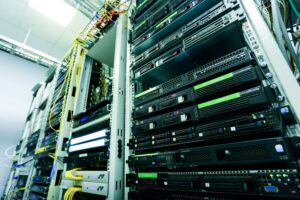In the recent century, technology has changed nearly everything about the economy. The changes are more evident in the education sector as incorporating technology in the classroom increases each day. Learning is not just about the events limited in a 4-walled classroom; it is now extensive and unlimited. As a result, students and teachers keep abreast with the changes brought forth by new technologies in education.
While technology cannot replace the role of a teacher in class, it has boosted the learning experience making working easier and enjoyable for both the educators and learners. Here are various ways in which technology has advanced education methods in learning institutions
Improved Acquisition of Learning Resources
Books are no longer the only option for students to find relevant information. Technology has availed useful sites and numerous learning resources for students. In addition, students can check online for any information through phones, tablets and computers. As a result, they quickly find relevant and updated information to supplement classroom content.
Students can also access help from a reliable essay writing service easily through their gadgets. At a click of a button, one can order a specific service such as completing assignments or a complex essay by a professional. Only s subject expert can ensure an excellent piece.
Enhanced Interaction and Collaboration
Effective learning necessitates interaction and sharing of information between a student and a teacher or amongst students. This feature was not well utilized in the past as it is today. Credit goes to the new technologies that allow educators to share learning materials with their learners easily. Students also submit their assignments and do consultations easily without having to look for a tutor physically.
Technology has improved how students collaborate with online writing companies such as custom-writing.co.uk that contribute to student’s progress academically. For example, students can research various companies before choosing a specific one to help them with multiple education tasks.
Student Participation
Technology has made education a win-win experience where both teachers and students can be involved in learning. Students don’t have to do the listening only; they can also engage the educators, ask questions and offer additional information learned. Even online learners can participate maximally in the classroom through their gadgets.
Moreover, the use of mobile phones and computers helps students to maximize their learning time. After attending physical classes, they can continue learning and completing their assignments while at home.
Innovation
Through innovation, there are new opportunities and experiences for learners with different needs. Students learn differently, and sometimes they need customized teaching for them to grasp specific concepts. Technology has granted numerous opportunities for various groups of students.
Children who learn slowly can have recorded lessons which they listen to at their convenient time. They can save learning materials on their computers for further reference. They don’t have to stress over getting along with their quick learning peers; they can have it easy and choose their time to continue learning at their convenience.
Students with special needs are not left out. Teachers have been able to devise teaching aids for them. As a result, they can have a good education and compete favorably with the rest of them.
Quick Assessment
With traditional education, assessment is a burden to teachers. It is also time-consuming. The new age is transforming this quickly. Digital education that embraces the latest technology in assessment is enjoyable and quick for educators when assessing the learners’ performance. There are quick methods of marking students’ papers.
Storing and transferring the scores for academics tests is simple. Various apps are designed to help teachers export students’ results effectively. When time lapses, and there is a need to refer back to particular results, the retrieval methods are quick and straightforward.
High Motivation for Learners
Technology boosts the morale of students. Traditional education entails learning experiences characterized by constant interaction with voluminous books, which can be boring for students. Digital education involves various strategies such as gamification, virtual reality, and 3D printing. They motivate students and keep them inspired for the education tasks facing them.
A highly motivated student spends most of his or her time pursuing their academic goals. Consequently, academic performance increases, making education productive.
With every sector worldwide embracing technology in its operation, educators need to adapt digital education more. The innovation seen in the 21st century has the power to advance education in a significant way. Both students and teachers can enjoy and make the most out of the various beneficial digital tools that make learning efficient.


